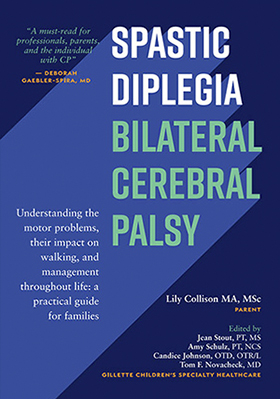Intrathecal baclofen (ITB) is an alternative method of administering the drug baclofen. (The other method is orally–by mouth.) The following is an explanation of each term:
- Intrathecal: “Intra” means “within,” and the “theca” is the sheath enclosing the spinal cord. The intrathecal area is the fluid-filled space surrounding the spinal cord; cerebrospinal fluid (CSF) flows through this area, bathing and protecting the spinal cord.
- Baclofen: The name of the medication.
With ITB, a pump stores and delivers baclofen directly to the CSF in the intrathecal area. Implantation of an ITB pump is a neurosurgical procedure. The pump is filled with baclofen and inserted under the skin of the abdomen. A catheter (a narrow, flexible tube) is connected to the pump and routed under the skin to the patient’s back. Surgeons make an incision to position the tip of the catheter in the intrathecal space, where it delivers the baclofen directly to the CSF. The pump is programmed to slowly release baclofen over a period of time. It can also be programmed to deliver different amounts at different times during the day. It is programmed to suit the needs of the individual patient.
Delivering baclofen directly into the CSF means the drug can be effective at a much lower dose. This helps avoid the unpleasant side effects patients often experience when taking oral baclofen, including dizziness and drowsiness.
ITB is a tone-reducing treatment for both spasticity and dystonia. It is better at reducing tone in the lower extremities than the upper extremities.
Implantation of an ITB pump usually requires a hospital stay, typically five to seven days. The patient must lie flat for up to three days after pump implantation for healing. The patient wears an abdominal binder for six to eight weeks afterward to support the pump and prevent swelling. The pump has to be refilled with baclofen about every three to four months in a hospital outpatient clinic. Because the pump has a limited battery life, it must be surgically removed and replaced after seven years.
Overall, evidence supports the use of ITB in CP. It is worth noting, however, that most research on ITB is limited to measuring tone reduction—very little data is available about functional or quality of life outcomes.
The above is an extract from Spastic Diplegia–Bilateral Cerebral Palsy available here.


